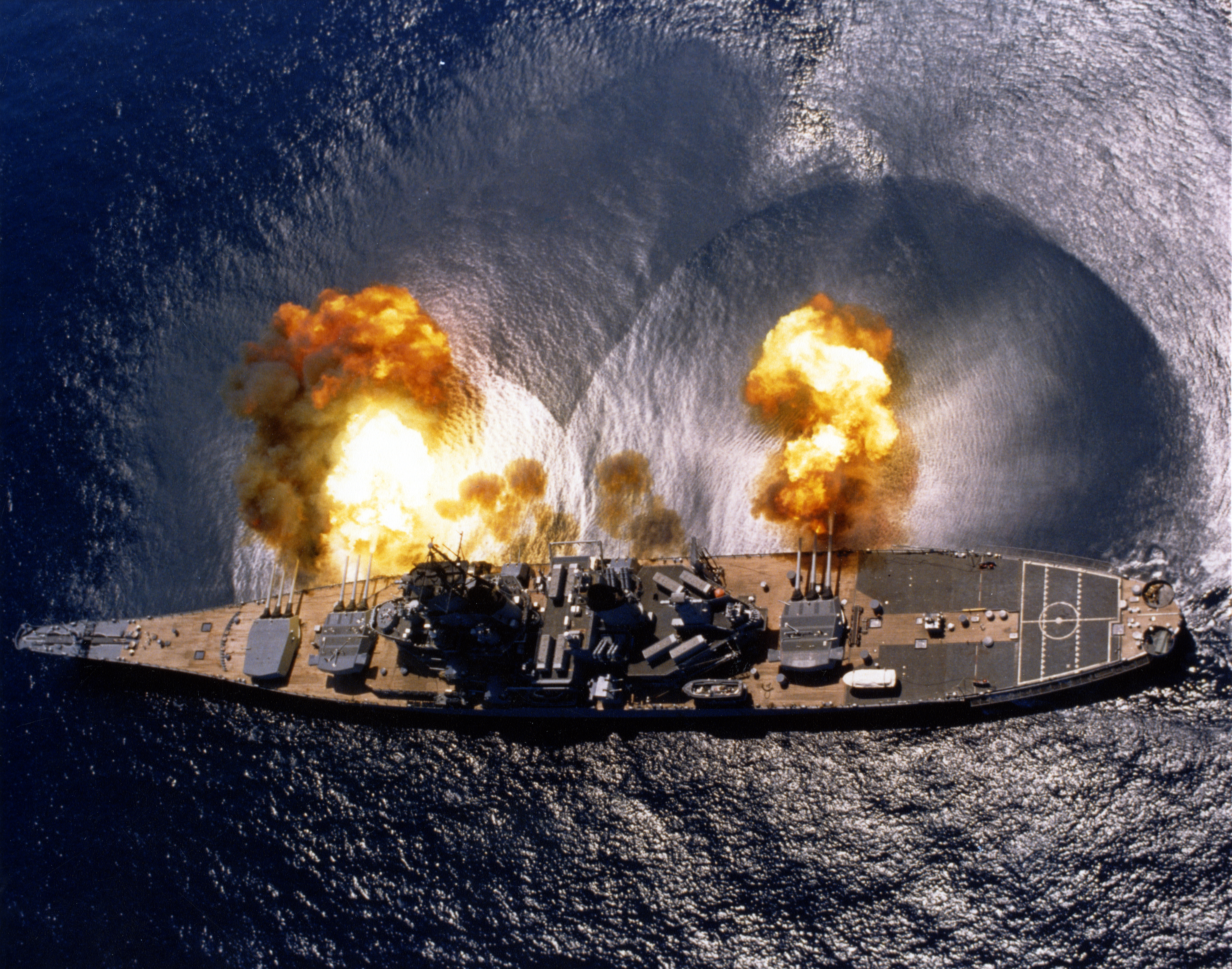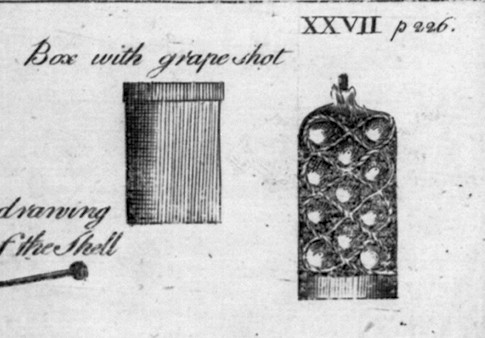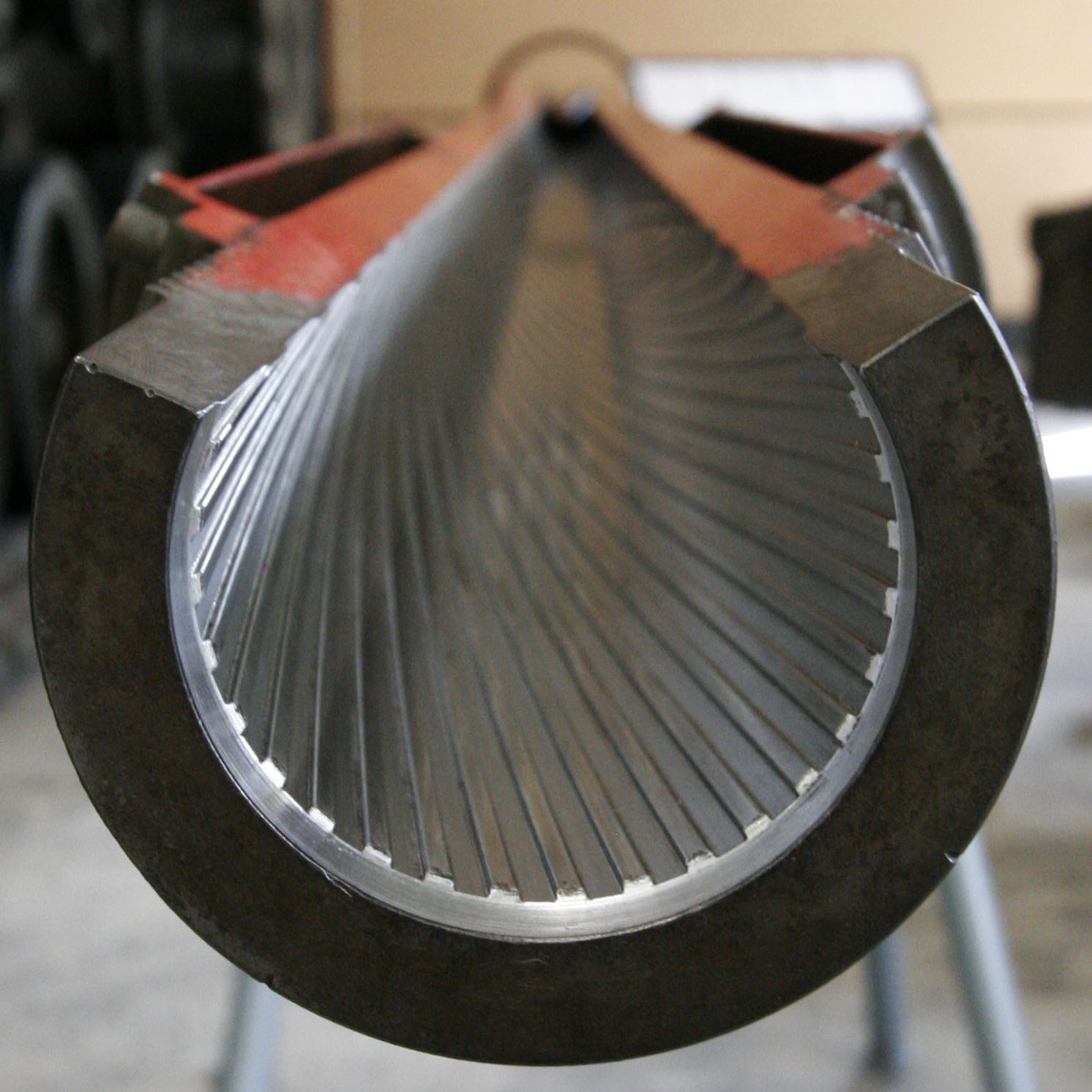|
Carronade
A carronade is a short, smoothbore, cast-iron cannon which was used by the Royal Navy. It was first produced by the Carron Company, an ironworks in Falkirk, Scotland, and was used from the last quarter of the 18th century to the mid-19th century. Its main function was to serve as a powerful, short-range, anti-ship and anti-crew weapon. The technology behind the carronade was greater dimensional precision, with the shot fitting more closely in the barrel, thus transmitting more of the propellant charge's energy to the projectile, allowing a lighter gun using less gunpowder to be effective. Carronades were initially found to be very successful, but they eventually disappeared as naval artillery advanced, with the introduction of rifling and consequent change in the shape of the projectile, exploding shells replacing solid shot, and naval engagements being fought at longer ranges. History The carronade was designed as a short-range naval weapon with a low muzzle velocity f ... [...More Info...] [...Related Items...] OR: [Wikipedia] [Google] [Baidu] |
Naval Gun
Naval artillery is artillery mounted on a warship, originally used only for naval warfare and then subsequently used for more specialized roles in surface warfare such as naval gunfire support (NGFS) and anti-aircraft warfare (AAW) engagements. The term generally refers to powder-launched projectile-firing weapons and excludes self-propelled projectiles such as torpedoes, rockets, and missiles and those simply dropped overboard such as depth charges and naval mines. Origins The idea of ship-borne artillery dates back to the classical era. Julius Caesar wrote about the Roman navy's usage of ship-borne catapults against Celtic Britons ashore in his ''Commentarii de Bello Gallico''. The dromons of the Byzantine Empire carried catapults and Greek fire. From the Middle Ages onwards, warships began to carry cannons of various calibres. In the Battle of Tangdao in 1161, the Southern Song general Li Bao used huopao (a type of gunpowder weapons, possibly cannons) and fire arrows against ... [...More Info...] [...Related Items...] OR: [Wikipedia] [Google] [Baidu] |
Cannon
A cannon is a large-caliber gun classified as a type of artillery, which usually launches a projectile using explosive chemical propellant. Gunpowder ("black powder") was the primary propellant before the invention of smokeless powder during the late 19th century. Cannons vary in gauge (firearms), gauge, effective range, mobility (military), mobility, rate of fire, elevation (ballistics), angle of fire and firepower; different forms of cannon combine and balance these attributes in varying degrees, depending on their intended use on the battlefield. A cannon is a type of heavy artillery weapon. The word ''cannon'' is derived from several languages, in which the original definition can usually be translated as ''tube'', ''cane'', or ''reed''. The earliest known depiction of cannons may have appeared in Science and technology of the Song dynasty#Gunpowder warfare, Song dynasty China as early as the 12th century; however, solid archaeological and documentary evidence of cannons do ... [...More Info...] [...Related Items...] OR: [Wikipedia] [Google] [Baidu] |
Carron Company
The Carron Company was an ironworks established in 1759 on the banks of the River Carron near Falkirk, in Stirlingshire, Scotland. After initial problems, the company was at the forefront of the Industrial Revolution in the United Kingdom. The company prospered through its development and production of a new short-range and short-barrelled naval cannon, the carronade. The company was one of the largest iron works in Europe through the 19th century. After 223 years, the company became insolvent in 1982 and was later acquired by the Franke Corporation, being rebranded Carron Phoenix. Early years The original founders of the Carron Works were: John Roebuck, a medical doctor and chemist from Sheffield; his two brothers, Thomas Roebuck and Ebenezer Roebuck; Samuel Garbett, a merchant from Birmingham; William Cadell, Senior, an industrialist from a merchant family, from Cockenzie, East Lothian; his son, William Cadell, Junior; and John Cadell. The factory of "Roebuck, Garb ... [...More Info...] [...Related Items...] OR: [Wikipedia] [Google] [Baidu] |
Charles Gascoigne
Charles Gascoigne (1737–1806) was a British industrialist at the beginning of the Industrial Revolution. Gascoigne was an architect, mechanic, inventor, businessman and industrialist. He spent the final twenty years of his life in the Russian Empire, gaining fame as an engineer-inventor, entrepreneur, and specialist in production. Gascoigne is regarded as the founder of the industrial city of Luhansk in eastern Ukraine, in 1795. Early life Charles Gascoigne was born in 1737 in Great Britain. His father was Captain Woodroffe Gascoigne, who was deployed in Scotland after the Battle of Culloden in 1746. His mother was Grizel, eldest daughter of Charles Elphinstone, 9th Lord Elphinstone and his wife Elizabeth Primrose. Career Gascoigne worked for the British East India Company and as a partner in "Coney and Gascoigne", a firm of drysalters in London. He married Mary, the daughter of Samuel Garbett, at St Martin's, Birmingham, in 1759. Garbett was a founding partner in the ... [...More Info...] [...Related Items...] OR: [Wikipedia] [Google] [Baidu] |
Robert Melvill
General Robert Melvill (or Melville) LLD (12 October 1723 – 29 August 1809) was a Scottish soldier in the British Army, antiquary, botanist, inventor, and slave plantation owner. He was owner of the Marigot, Dominica, Melville Hall (Dominica) and Carnbee (Tobago) estates. Melvill invented (1759) the Carronade, a cast-iron cannon popular for 100 years, in co-operation with the Carron Iron Works (from which it takes its name). He founded the Saint Vincent and the Grenadines Botanic Gardens in the West Indies. Life Melville was born in Monimail in Scotland, the son of Rev Andrew Melville, a clergyman, and Helen Whytt, sister of Dr. Robert Whytt. As a member of the noble Melville family, he was related to the Earls of Leven and Earls of Melville. He was educated at the grammar school in Leven, Fife, Leven, and attended Glasgow University (at the same time as Adam Smith) but left to study medicine at Edinburgh University. He left his studies a second time and joined the 25th ... [...More Info...] [...Related Items...] OR: [Wikipedia] [Google] [Baidu] |
Grapeshot
In artillery, a grapeshot is a type of ammunition that consists of a collection of smaller-caliber round shots packed tightly in a canvas bag and separated from the gunpowder charge by a metal wadding, rather than being a single solid projectile. When assembled, the shot resembled a cluster of grapes, hence the name. Grapeshot was used both on land and at sea. On firing, the canvas wrapping disintegrates and the contained balls scatter out from the muzzle, giving a ballistic effect similar to a giant shotgun. Grapeshot was devastatingly effective against massed infantry at short range and was also used at medium range. Solid shot was used at longer range and canister at shorter. When used in naval warfare, grapeshot served a dual purpose. First, it continued its role as an anti-personnel projectile. However, the effect was diminished due to a large portion of the crew being below decks and the addition of hammock netting in iron brackets intended to slow or stop smaller shot. ... [...More Info...] [...Related Items...] OR: [Wikipedia] [Google] [Baidu] |
Falkirk
Falkirk ( ; ; ) is a town in the Central Lowlands of Scotland, historically within the county of Stirlingshire. It lies in the Forth Valley, northwest of Edinburgh and northeast of Glasgow. Falkirk had a resident population of 32,422 at the 2001 United Kingdom census, 2001 UK Census. The population of the town had risen to 34,570 according to a 2008 estimate, making it the List of towns and cities in Scotland by population, 20th most populous settlement in Scotland. Falkirk is the main town and administrative centre of the Falkirk (council area), Falkirk council area, which has an overall population of 156,800 and inholds the nearby towns of Grangemouth, Bo'ness, Denny, Falkirk, Denny, Camelon, Larbert and Stenhousemuir, and the cluster of Falkirk Braes, Braes villages. The town is at the junction of the Forth and Clyde Canal, Forth and Clyde and Union Canal (Scotland), Union Canals, a location which proved key to its growth as a centre of heavy industry during the Industria ... [...More Info...] [...Related Items...] OR: [Wikipedia] [Google] [Baidu] |
United Kingdom
The United Kingdom of Great Britain and Northern Ireland, commonly known as the United Kingdom (UK) or Britain, is a country in Northwestern Europe, off the coast of European mainland, the continental mainland. It comprises England, Scotland, Wales and Northern Ireland. The UK includes the island of Great Britain, the north-eastern part of the island of Ireland, and most of List of islands of the United Kingdom, the smaller islands within the British Isles, covering . Northern Ireland shares Republic of Ireland–United Kingdom border, a land border with the Republic of Ireland; otherwise, the UK is surrounded by the Atlantic Ocean, the North Sea, the English Channel, the Celtic Sea and the Irish Sea. It maintains sovereignty over the British Overseas Territories, which are located across various oceans and seas globally. The UK had an estimated population of over 68.2 million people in 2023. The capital and largest city of both England and the UK is London. The cities o ... [...More Info...] [...Related Items...] OR: [Wikipedia] [Google] [Baidu] |
Rifling
Rifling is the term for helical grooves machined into the internal surface of a firearms's barrel for imparting a spin to a projectile to improve its aerodynamic stability and accuracy. It is also the term (as a verb) for creating such grooves. The opposite of rifling is smoothbore. Rifling is measured in ''twist rate'', the distance the rifling takes to complete one full revolution, expressed as a ratio with 1 as its base (e.g., 1:). A shorter distance/lower ratio indicates a faster twist, generating a higher spin rate (and greater projectile stability). The combination of length, weight, and shape of a projectile determines the twist rate needed to gyroscopically stabilize it: barrels intended for short, large-diameter projectiles such as spherical lead balls require a very low twist rate, such as 1 turn in 48 inches (122 cm). Barrels intended for long, small-diameter projectiles, such as the ultra-low-drag 80-grain 0.223 inch bullets (5.2 g, 5.56&nb ... [...More Info...] [...Related Items...] OR: [Wikipedia] [Google] [Baidu] |
Naval Warfare
Naval warfare is combat in and on the sea, the ocean, or any other battlespace involving a major body of water such as a large lake or wide river. The Military, armed forces branch designated for naval warfare is a navy. Naval operations can be broadly divided into riverine/littoral applications (brown-water navy), open-ocean applications (blue-water navy), between riverine/littoral and open-ocean applications (green-water navy), although these distinctions are more about strategic scope than tactical or operational division. The strategic offensive purpose of naval warfare is Power projection, projection of force by water, and its strategic defensive purpose is to challenge the similar projection of force by enemies. History Mankind has fought battles on the sea for more than 3,000 years. Even in the interior of large landmasses, transportation before the advent of extensive rail transport, railways was largely dependent upon rivers, lakes, canals, and other navigable waterways ... [...More Info...] [...Related Items...] OR: [Wikipedia] [Google] [Baidu] |
Muzzle Velocity
Muzzle velocity is the speed of a projectile (bullet, pellet, slug, ball/ shots or shell) with respect to the muzzle at the moment it leaves the end of a gun's barrel (i.e. the muzzle). Firearm muzzle velocities range from approximately to in black powder muskets, to more than in modern rifles with high-velocity cartridges such as the .220 Swift and .204 Ruger, all the way to for tank guns firing kinetic energy penetrator ammunition. To simulate orbital debris impacts on spacecraft, NASA launches projectiles through light-gas guns at speeds up to . Several factors, including the type of firearm, the cartridge, and the barrel length, determine the bullet's muzzle velocity. Projectile velocity For projectiles in unpowered flight, its velocity is highest at leaving the muzzle and drops off steadily because of air resistance. Projectiles traveling less than the speed of sound (about in dry air at sea level) are ''subsonic'', while those traveling faster are ''super ... [...More Info...] [...Related Items...] OR: [Wikipedia] [Google] [Baidu] |







